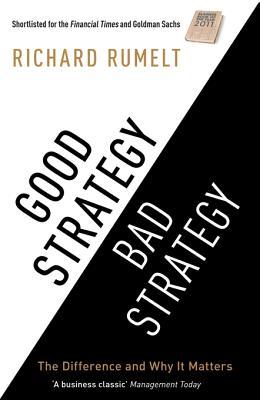More on this book
Community
Kindle Notes & Highlights
Read between
January 10 - January 23, 2022
The kernel of a strategy contains three elements: a diagnosis, a guiding policy, and coherent action. The guiding policy specifies the approach to dealing with the obstacles called out in the diagnosis.
Corporate boards sign off on strategic plans that are little more than wishful thinking.
Good strategy requires leaders who are willing and able to say no to a wide variety of actions and interests. Strategy is at least as much about what an organization does not do as it is about what it does.
The current fill-in-the-blanks template starts with a statement of “vision,” then a “mission statement” or a list of “core values,” then a list of
decision makers,” they are not talking about master strategists, for a master strategist is a designer.
It is also human nature to associate current profit with recent actions, even though it should be evident that current plenty is the harvest of planting seasons long past.
Good strategy is design, and design is about fitting various pieces together so they work as a coherent whole.
The hard-won lesson was that a good product-market strategy is useless if important competencies, assumed present, are absent and their development is blocked by long-established culture.
Still, it is dangerous to think that organizational culture can be changed quickly or easily.
The first step in breaking organizational culture inertia is simplification.
This process of learning—hypothesis, data, anomaly, new hypothesis, data, and so on—is called scientific induction and is a critical element of every successful business.


